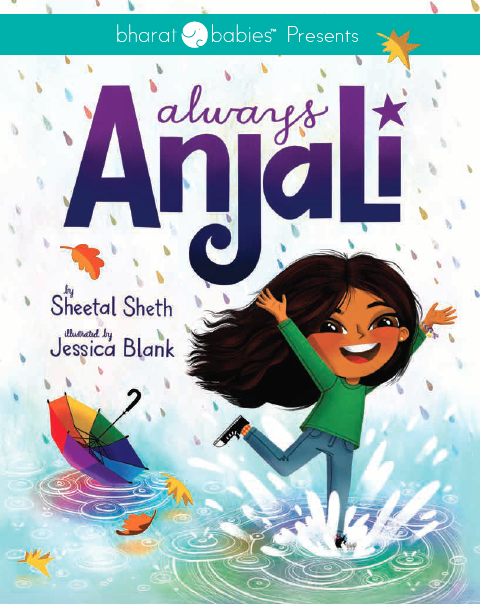
Image Credit: Bharat Babies, Sheetal Sheth/Jessica Blank
“Be proud of who you are Anjali. To be different is to be marvelous.”
Many children (and adults!) can relate to the frustrations that arise from having a name that’s different and unique. Growing up in the 90s, my name (ALIA) confused the heck out of most people. Everyone insisted on spelling it like the singer AALIYAH did and most people struggled with the pronunciation (AH-lia). Nevertheless, I knew that my name was special, that it suited me, that it had Arabic origins and meant “the highest” and “sublime.” Most importantly, it was the name that my parents gave me, and that made me feel pretty dang special.
So often when we feel different and start to wonder why we “can’t be like everyone else,” it’s because society is telling us that some element of our being is “not normal.” “Fitting-in” has, since the beginning of time, all over the world, been a huge part of human society. Society dictates what is considered “normal” and quite often, when indigenous people and people of color (who very often have names that reflect their cultural background) are in white spaces, any bit of “difference” can lead to unkindness, bullying and racism. That can be very tough on a young child!

Image Credit: Bharat Babies, Sheetal Sheth/Jessica Blank
In Always Anjali, Anjali wakes up on her seventh birthday to a shiny new bike. She excitedly heads to a carnival with her best friends Courtney and Mary (take note of their Anglo-names). At the carnival, they stop by a booth to get matching personalized license plates for their bikes. Anjali can’t find her name, though, AND a bully makes fun of her name! This frustrates and maddens her and that night, she declares to her family that she is no longer Anjali! She wants to be called ANGIE instead. Her parents tolerate none of this, of course, and lovingly tell her the meaning of her name. Her name is sanskrit from India and it represents all that is powerful and beautiful about her family and her culture. Late that night, Anjali is inspired and comes up with a beautiful piece of art to share with her friends the next day.

Image Credit: Bharat Babies, Sheetal Sheth/Jessica Blank
Sheth doesn’t shy away from topics of race, stereotypes and bullying in this story. At the carnival, class-bully Zachary taunts her by calling her “An-Jelly.” Sheth & Blank take this situation a step further; in the next scene, Zachary’s shadow is against a red background, and as he holds a ketchup bottle to his forehead, angry white letters shout “PEANUT BUTTER AN-JELLY. CAN I GET A PEANUT BUTTER AN-JELLY WITH A DOT ON TOP?!” Zachary, a white male, stirs up a tired, racist stereotype of Indian people (“dot”) by saying these words to her and putting ketchup on his head to mock a bindi & her culture. He intimidates a young Indian American girl into being ashamed of her name. This is a frustrating but important scene because it’s a situation that many indigenous children and children of color can relate to, especially when they occupy predominantly white spaces/spaces not within their communities.
Though this picture book touches on tough topics, there’s also a lot of joy and brightness to balance. I love the cheery, vibrant illustrations in this book. Blank does an excellent job of portraying Anjali’s positive and colorful energy. She also shows us Anjali’s passion and frustration. The digital illustrations have a hazy, soft feel at times and Anjali’s emotions are on full display through her large, expressive eyes & eyebrows.
Always Anjali is a delightful story of confidence, friendship and family. Names are important. We are always a reflection of those who’ve come before us and names tell the world who we are. This book reminds children, especially children with special names & names that reflect their culture, that they have absolutely no need to hide their shine.
P.S. The book Alma and How She Got Her Name by Juana Martinez-Neal pairs perfectly with Always Anjali! 😉
Recommended for: 2nd Grade and up
Great for: Confidence, Family, Peer Pressure, Friendship, Cultural Diversity, Indian American, Self Esteem, Pride, Bullying
Book Info: Always Anjali by Sheetal Sheth/Illustrated by Jessica Blank, 2018 Bharat Babies, ISBN: 9781684019687









